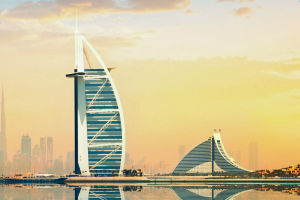The Mir Castle complex, constructed at the end of the 15th century, is widely regarded as an outstanding example of medieval European castle architecture.
Not only does it blend various architectural styles from different eras in Western history, but it also holds immense historical significance as "the easternmost castle in Europe".
For centuries, Mir served as a crucial fortress on the Polish-Lithuanian border and was one of the most easterly feudal castles in Europe. Originally, it belonged to the Grand Duke of Lithuania, but it fell into private hands in 1434.
In the 1500s, during the reign of the Lithuanian Marshal Jerze and his son Jerze, who were counts of the Holy Roman Empire, the town underwent significant reconstruction, fortification, and expansion, resulting in five tall red brick fortresses that were linked by defensive walls. The outer perimeter of the fortress was shaped like a horseshoe and surrounded by a ring of trenches.
In 1569, the central fortress was converted into a magnificent Renaissance palace by the Prince of Raziviu. Until 1812, it, along with the nearby Neswicz Castle, served as the two main bases of the Raziviu family. The Mir Castle is enclosed by a quadrangle, with towers at each corner. The fifth tower was equipped with a drawbridge and an iron fence for protection against attacks. The castle's walls feature two rows of round holes, which were designed to withstand gunfire, and each tower can fire artillery shells.
The boundary of the Mir Castle extended to the towers located just beyond the fence line. All the towers have the same structure, with tetrahedral walls and octagonal roofs, but they are adorned differently, adding a touch of beauty to the castle. Since 1568, the Mir Castle has been owned by the Duke of Radziwils, who completed the construction of the castle in Renaissance style, featuring a three-story artistic palace along the eastern and northern sides of the city.
The limestone gates, gilded and silvered metal decorations, elegant ramparts, and long corridors contribute to the castle's grandeur. Archaeological excavations have also revealed a large collection of tiles adorned with botanical and geometric designs, as well as the wardress of the castle's owner.
The Mire Castle was surrounded by earthen walls, along with earthworks and fortifications, with the walls standing at a towering height of 13 meters and measuring 75 meters in length. To the north of the castle is an Italian garden, while an artificial river lies to the south. The castle's overall shape resembles that of a twisted rectangle, with four towers erected at the four corners of the rectangle. Despite facing repeated destruction, the most severe of which occurred in 1812, the castle has been successfully restored and stands as a magnificent example of 16th-century architecture.
Mir is immortalized in the Polish epic poem "Mister Tadusch", in which the poet describes the Lithuanian Last Supper, held in the Mir Palace, where local nobility, full of hope and goodwill for Napoleon's liberation, held a splendid banquet, dancing the "Polonaise" and raising their glasses to toast ancient Poland.
The Mir Castle serves as a reminder of Poland's former glory, but with the rise of neighboring powers, it has become a memory of history.
The Mir Castle


